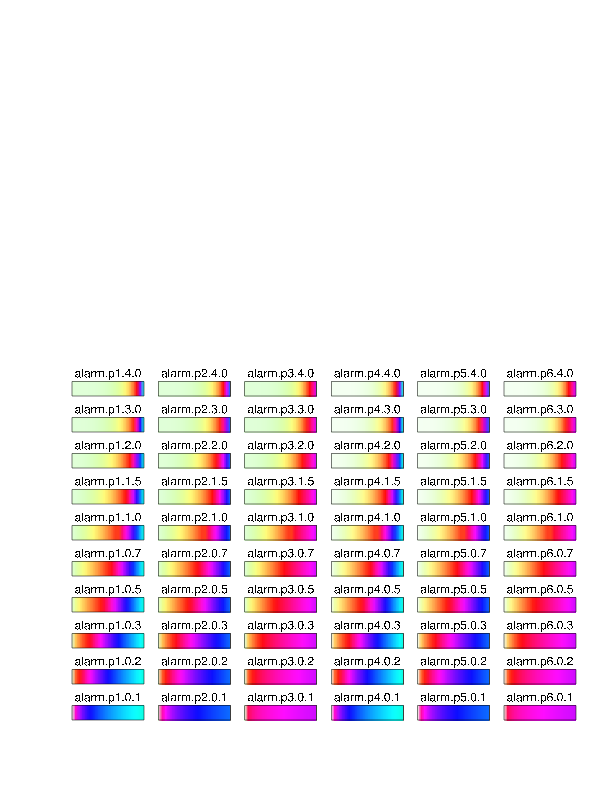
The color gradients given in this tarfile, and shown in the plot below, were originally developed for displaying earthquake shaking intensity: this is the kind of variable that is close to zero over a large area, with smaller areas having some larger value. In order to highlight the few regions of high value, the low values were given a green hue with little saturation: close to white. Higher values corresponded to more saturated colors, with the hue changing at the same time to yellow, orange, and red, a common sequence for expressing degree of alarm. (I should note that this was done in 1992, long before the "threat level" color scheme). For especially large values, the hue shifted from red to blue to cyan, a rough approximation of the colors seen iin incandescence at increasing temperatures.
This profile type should be useful in other settings: for example, in inversions in which regularization constrains large regions to be near zero. Too often some type of rainbow’’ palette is used, which results in large areas of the plot being shown as a deep blue.
The original profile is the one given here as alarm.p1.1.0.cpt. The p2 and p3 profiles come from limiting the higher levels to a smaller range of hues. The p4 profiles come from making the green for low levels even less saturated than in the p1 case: the p5 and p6 profiles come from modifying the p4 profile in the same way as the p1 profile was modified to produce the p2 and p3 ones.
For each profile type, the numerical value is the power of x taken before finding the color value, to stretch either the high side or the low side of the color profile. For large or small values of this power the p2 and p3 profiles resemble the p1 (and the p6 and p5 the p4); I have not tried to remove this redundancy.
These gradients are also available at the
cpt-city website,
which I heartily recommend as a source of color gradient
schemes.
